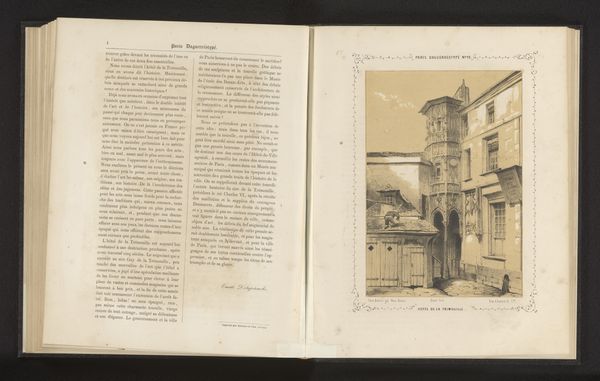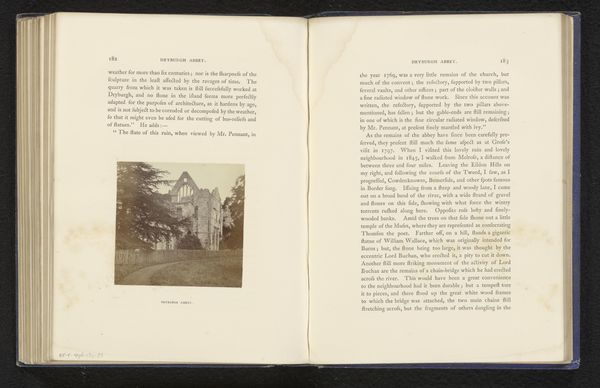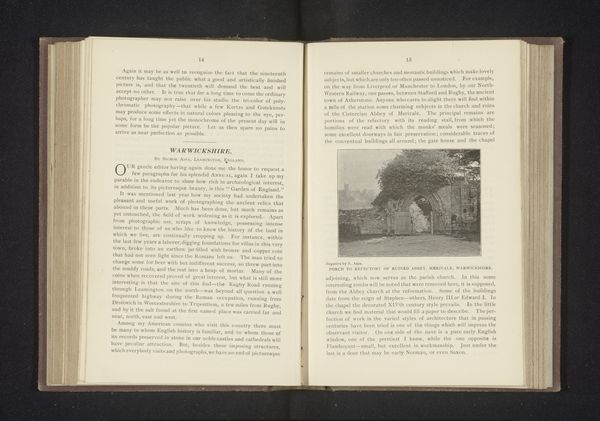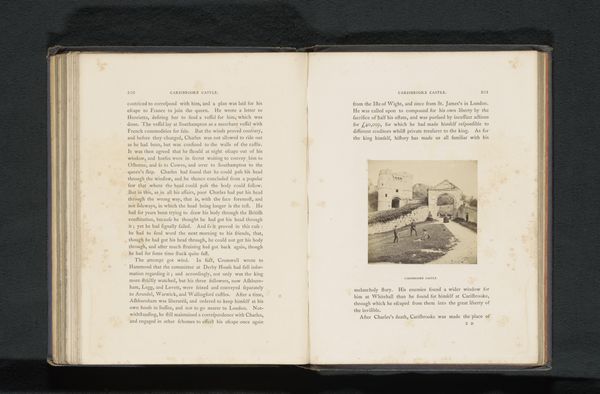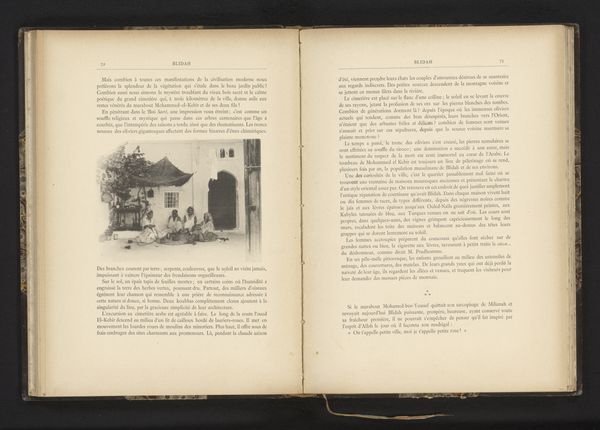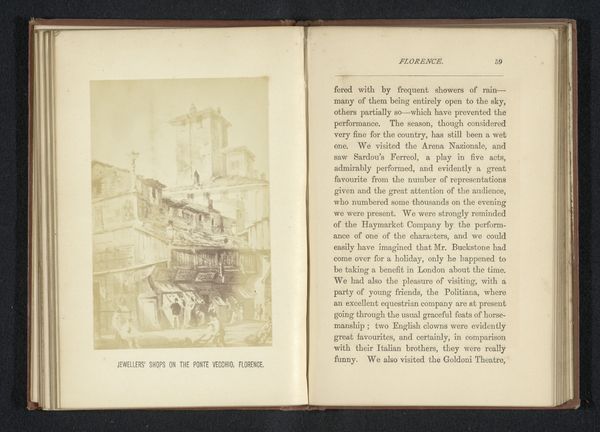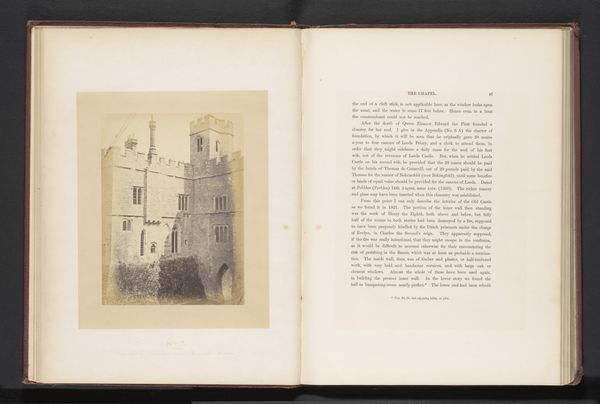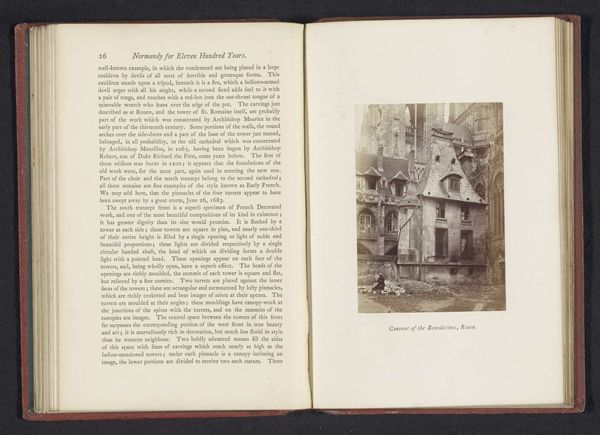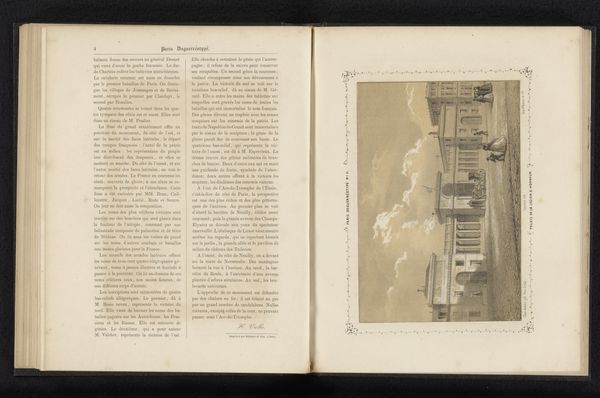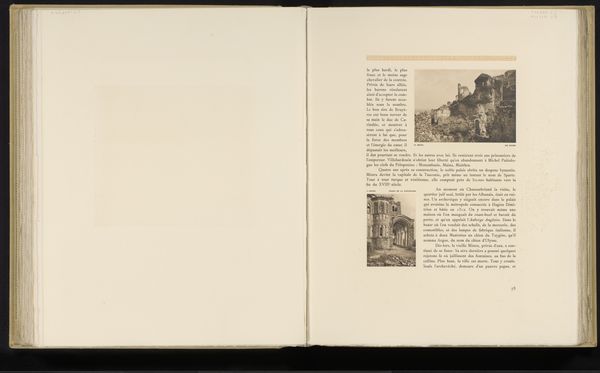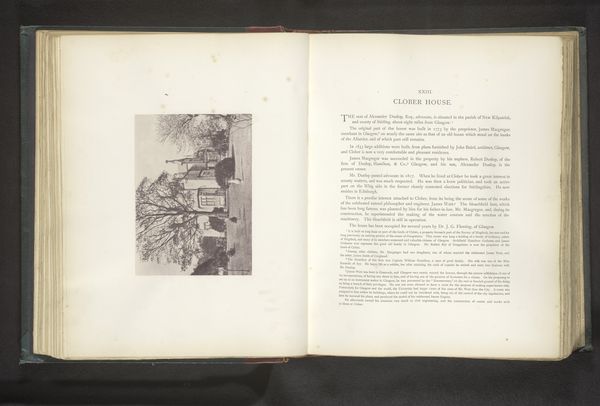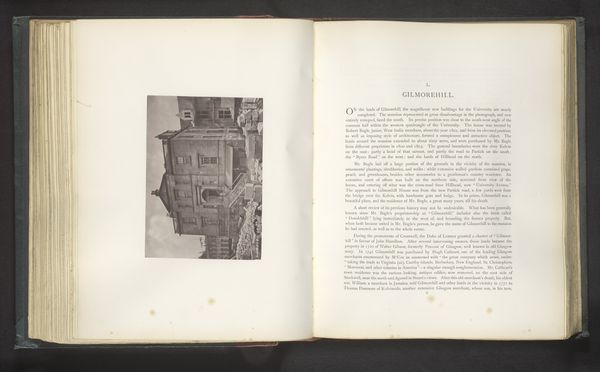
Groep mannen en jongens voor een huis in Kabylië, Algerije before 1893
0:00
0:00
print, photography
#
african-art
#
aged paper
#
homemade paper
# print
#
landscape
#
photography
#
personal sketchbook
#
hand-drawn typeface
#
journal
#
thick font
#
handwritten font
#
golden font
#
historical font
#
columned text
Dimensions: height 153 mm, width 119 mm
Copyright: Rijks Museum: Open Domain
Curator: What strikes me immediately is the tonal range, limited as it is to grayscale, there is a compelling contrast. The photograph, set in Kabylia, Algeria, is by Jules Gervais-Courtellemont. Its title translates to “Group of men and boys in front of a house in Kabylia.” We estimate it was taken before 1893. Editor: Yes, a melancholic grayscale palette certainly defines it. Let's consider this image, though, as an object. It exists as a photographic print, bound within a journal or sketchbook, a vehicle for a very specific kind of image circulation and material encounter. The means of production dictate how we consume it now. Curator: I agree. The form is interesting – a double page spread presents the photograph on the left, contextualized by facing text. The text itself, with its period-specific typeface, frames and almost "vignettes" the image, enhancing a sense of depth. Editor: Absolutely, and considering it's bound, this restricts its audience. The work becomes intrinsically tied to its context. And yet, paradoxically, the paper looks like homemade stock which seems somewhat at odds with a printed publication, doesn't it? It adds an intriguing dimension of labor to the encounter. Curator: It’s hard to say for certain but even without that question of facture, the placement of the subjects creates visual rhythm. Notice how their placement along the façade mimics architectural shapes? A triangulation draws one’s eye upwards. Editor: And how the texture of the aged paper softens what otherwise would be sharp photographic realism. The aged print further emphasizes the temporal distance, almost like a material embodiment of history, fading with each view. It is indeed suggestive. Curator: Do you find it revealing, its placement within this seemingly personal context? I'm eager to consider its function, both documentative and perhaps even aesthetic, for the artist. Editor: Indeed. How fascinating to think of its creation, bound and re-viewed over the decades. It adds layers of meaning concerning the role of photography, even "art," and questions traditional craft processes versus mechanical reproduction of a journal or book like this. Curator: Considering Courtellemont was invested in “Africanist art,” this presentation underscores the West’s deliberate framing, both literally and figuratively, of Algeria, through visual documentation. It raises interesting points about image construction itself, regardless of its placement. Editor: Very well said, thinking about its consumption is indeed key. That it resides in the Rijksmuseum speaks volumes about our own curatorial habits and legacies as well, does it not?
Comments
No comments
Be the first to comment and join the conversation on the ultimate creative platform.
